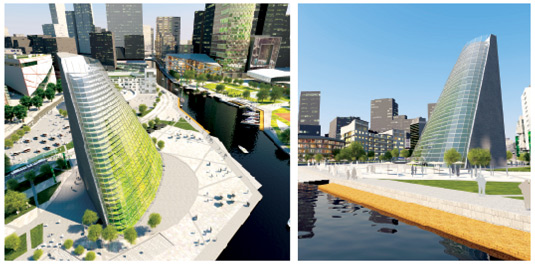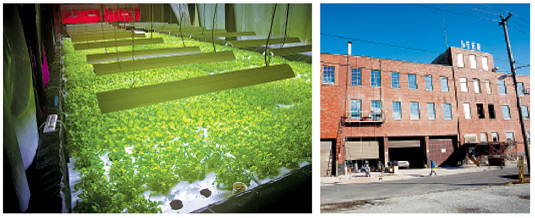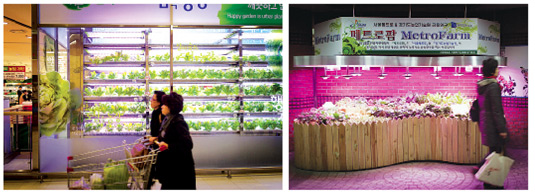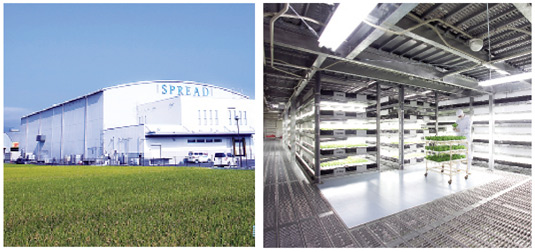 In Ecology for Designers, a new course at Fordham this fall, visiting professor Dickson D. Despommier, Ph.D., will introduce students to the basics of a functional ecosystem in nature, and teach them how to apply that knowledge to redesigns of the built environment.
In Ecology for Designers, a new course at Fordham this fall, visiting professor Dickson D. Despommier, Ph.D., will introduce students to the basics of a functional ecosystem in nature, and teach them how to apply that knowledge to redesigns of the built environment.
It’s a subject that Despommier, professor of environmental health sciences and microbiology at Columbia University, is an expert in, having authored The Vertical Farm: Feeding the World in the 21st Century (Picador, 2011).
“If a city can begin to make its own food supply from resources within the city, it can then begin to relieve pressure on the outside environment for those resources,” he said. “That creates an ecological world which is balanced both for where we live and where everything else is.”
As for the components of vertical farming, aeroponics, the process of growing plants in an air or mist environment without the use of soil, is one application that is still developing. But Despommier says the next generation of LED grow lights, which will be needed to replace sunlight, will likely be sophisticated.
“There’s a statement in the Bible that says we have to be the stewards of the Earth. Vertical farming allows you to contemplate that.”
Here are what Despommier sees as the most cutting-edge vertical farms currently in operation or development.
— Patrick Verel
Sky Greens, Singapore
Left: Sky Greens is a single-story vertical farm. It has a design using vertical systems to grow vegetables all year round.
Right: Workers can reach all levels via a ladder system cleverly designed to dovetail into the growing systems.
(Photos courtesy of Sky Greens)
Plantagon, Linkoping, Sweden
Both views of the proposed Plantagon 17-story vertical farm in Linkoping, Sweden are futuristic and extremely attractive. The plan is to grow leafy green vegetables of at least 10 varieties year round for export. This is a for-profit organization.
(Photos courtesy of Plantagon)
The Plant, Chicago
The Plant is a demonstration vertical farm with a brewery attached. It raises vegetables and fish via hydroponics and aquaponics. It has the potential to influence the development and establishment of commercial sized vertical farms in the Chicago area.
(Photos courtesy Plant Chicago, NFP/Rachel Swenie.)
Happy Garden in Lotte Mart at Seoul Station and Metro Farm at City Hall subway station, Seoul, South Korea
Left: Shoppers can get fresh produce all year round from in-store vegetable farms. Right: Vegetables are being produced inside the stores that sell them
in Japan and Korea. Most use LED grow lights.
(Photos courtesy of Malte E. Kollenberg)
Nuvege, Kyoto, Japan
Above: The Spread building, inside of which is the Nuvege site of
operations. It is the size of a 747 hangar.
Right: Inside the Nuvege operations in the Spread building. All crops
are produced under LED lighting and hydroponics systems are used for growing many varieties of leafy green vegetables.
(Photos courtesy of Nuvege)





